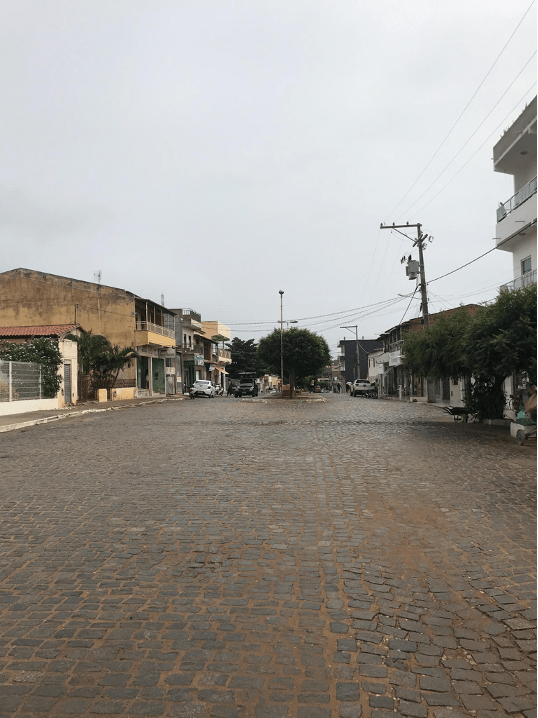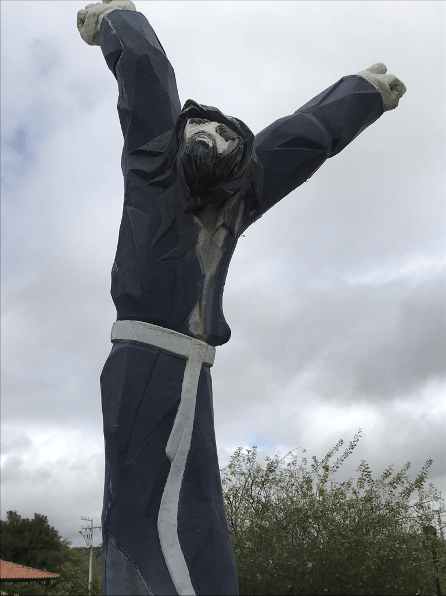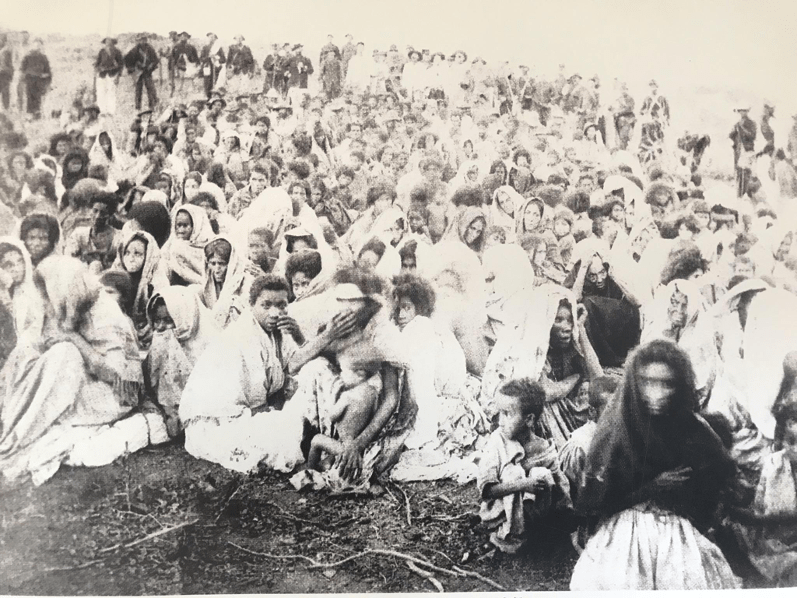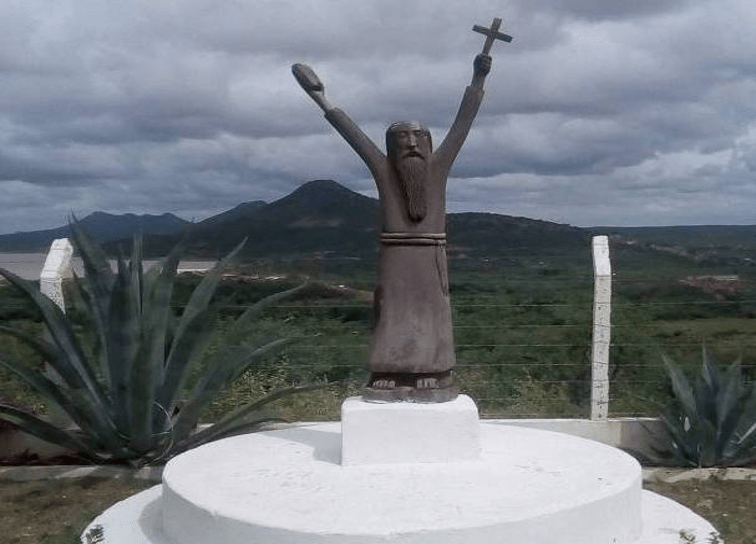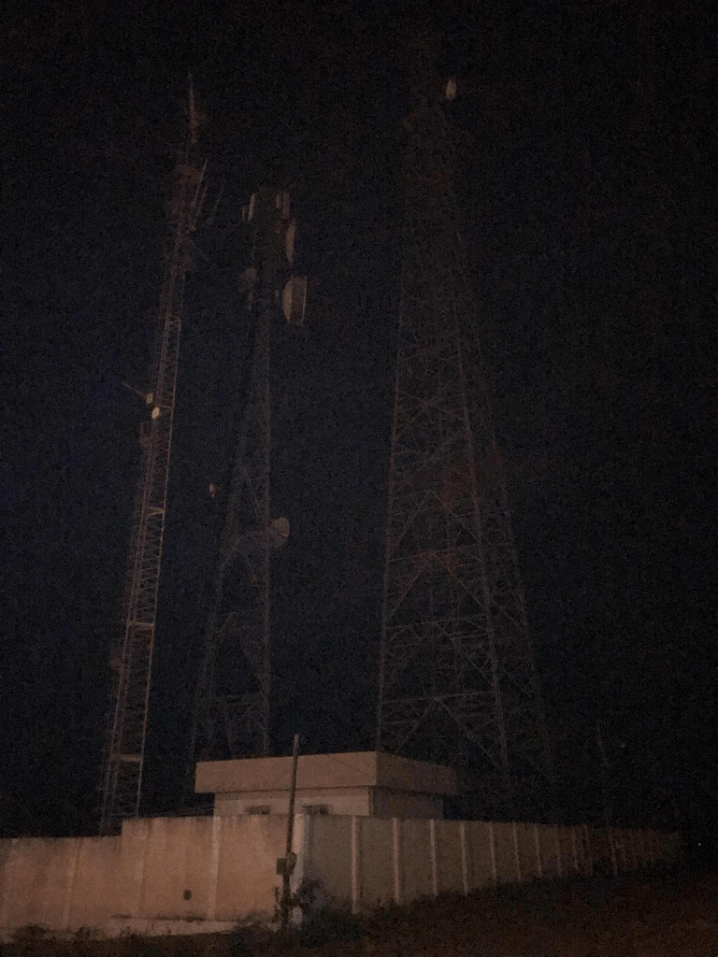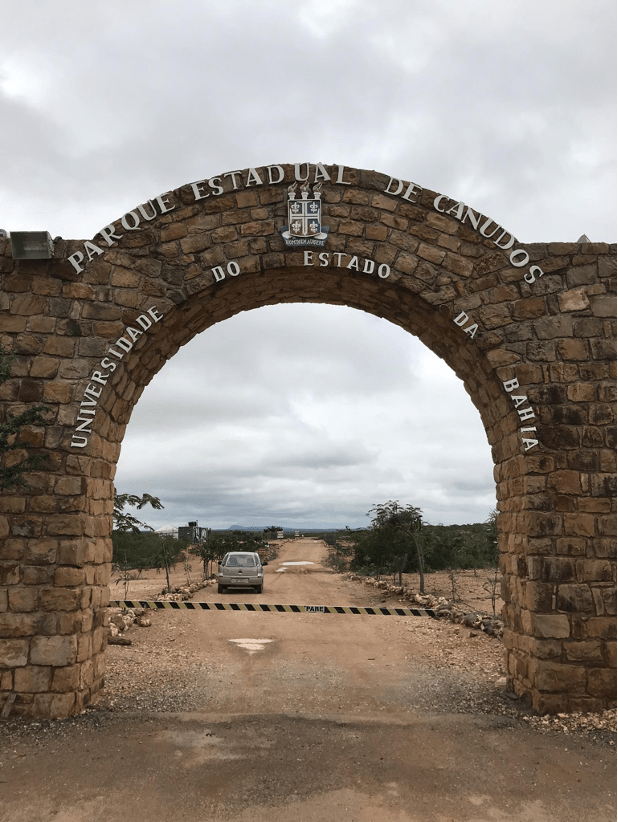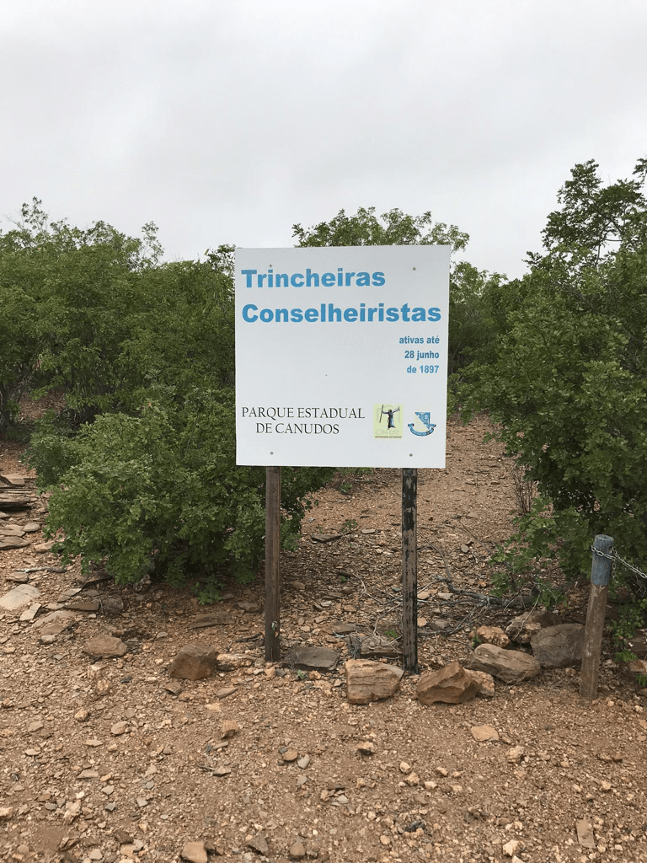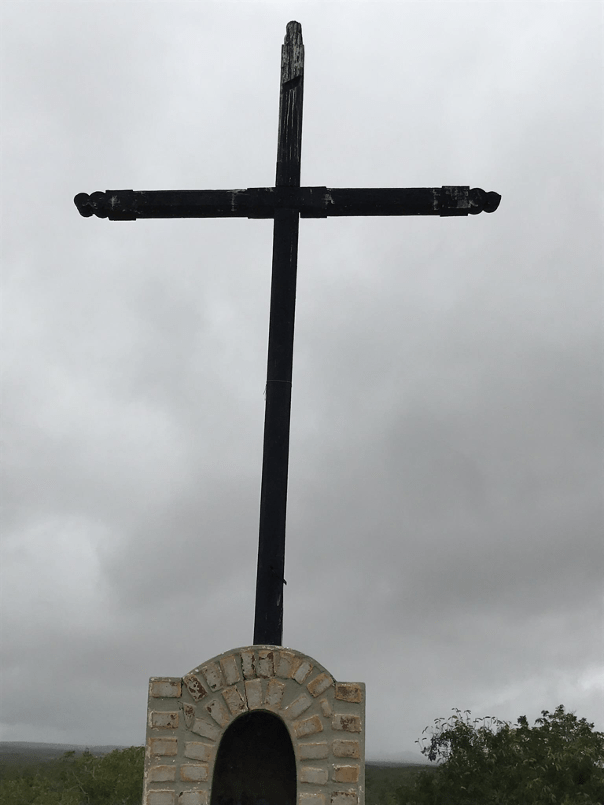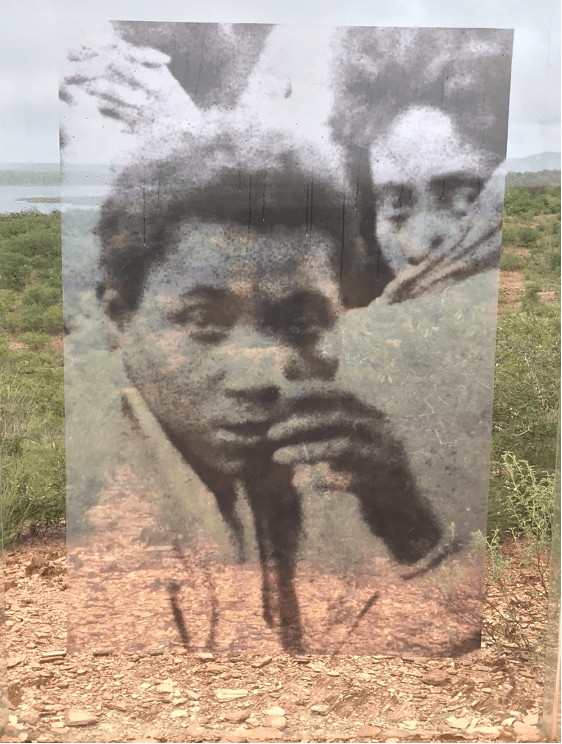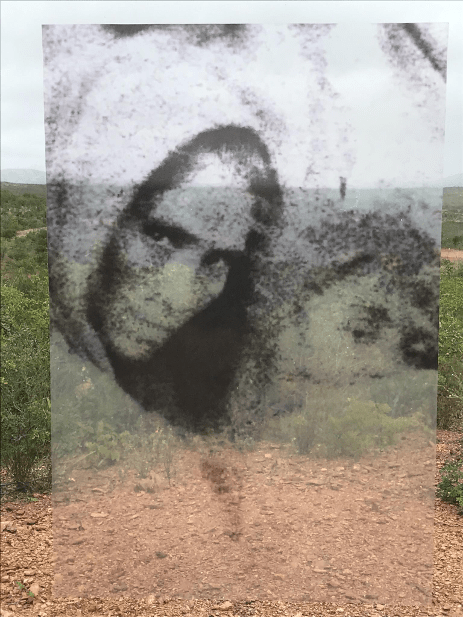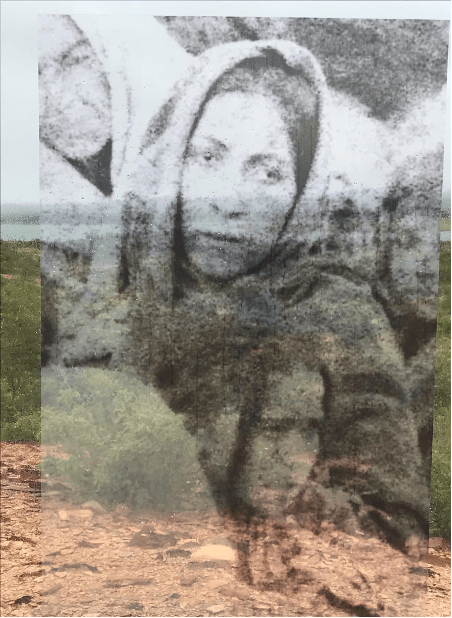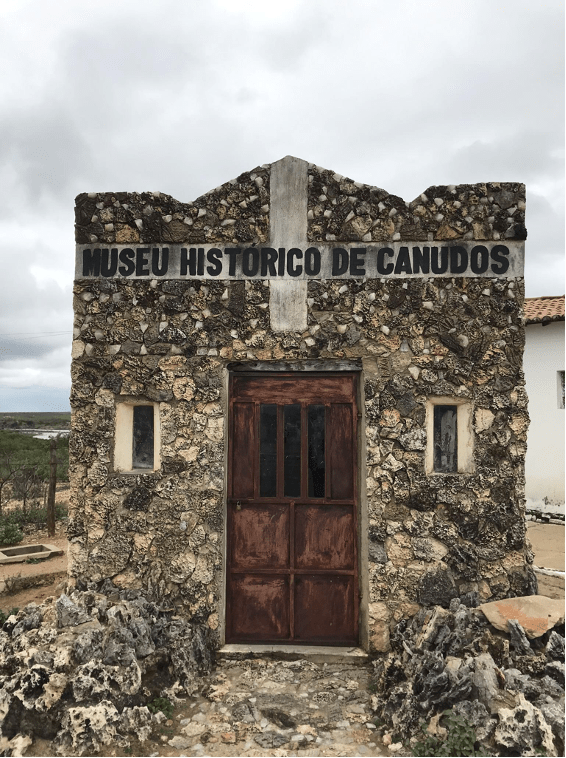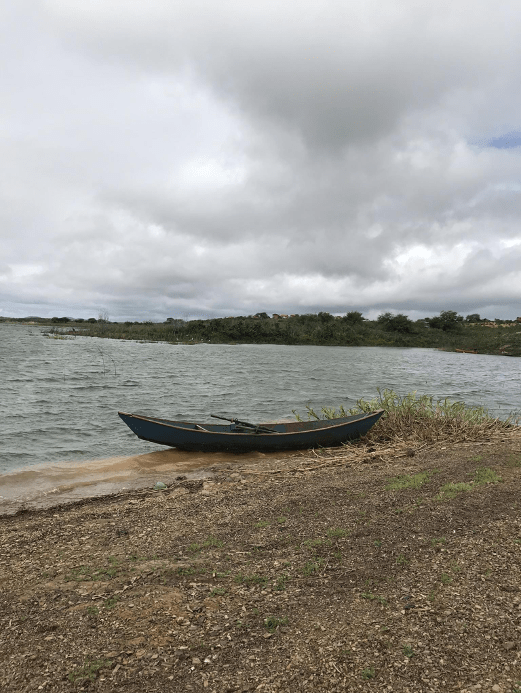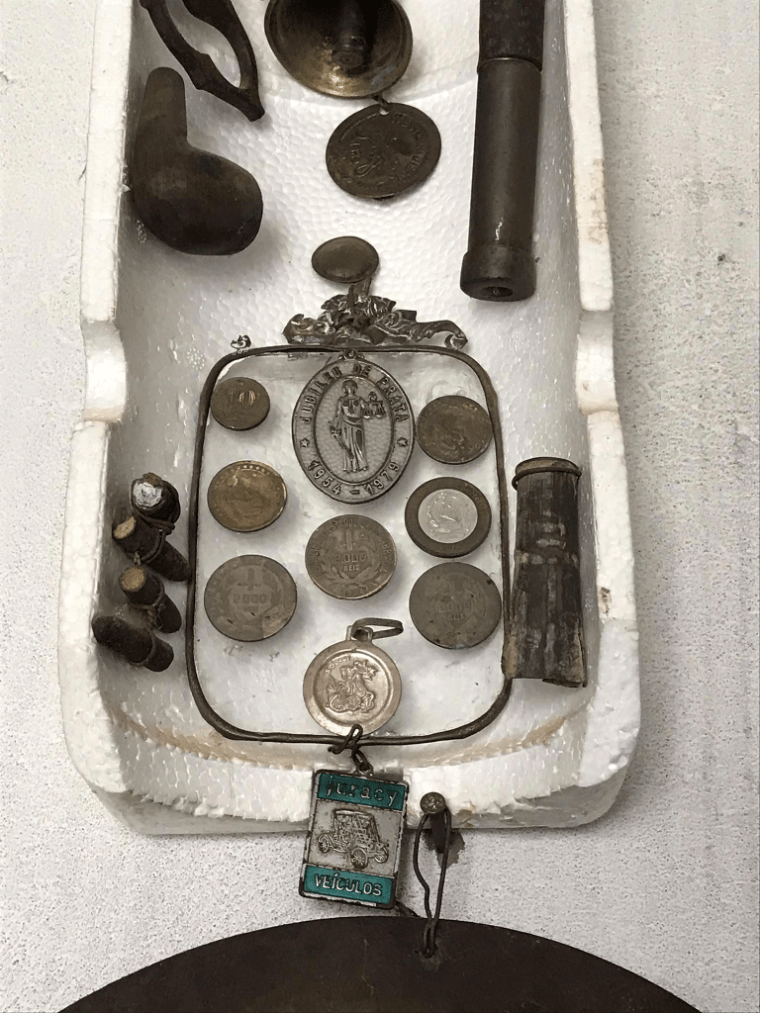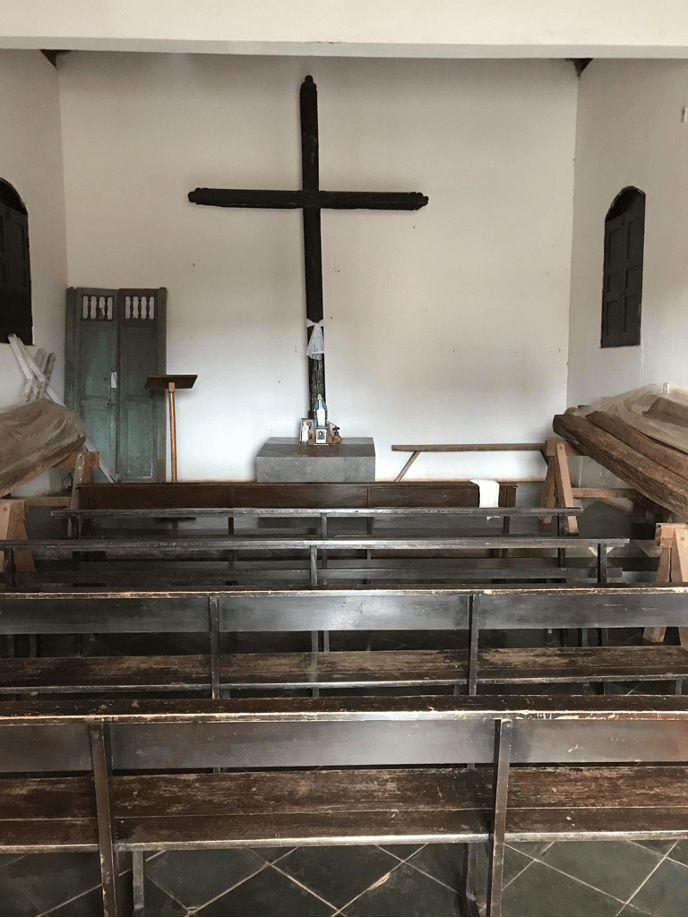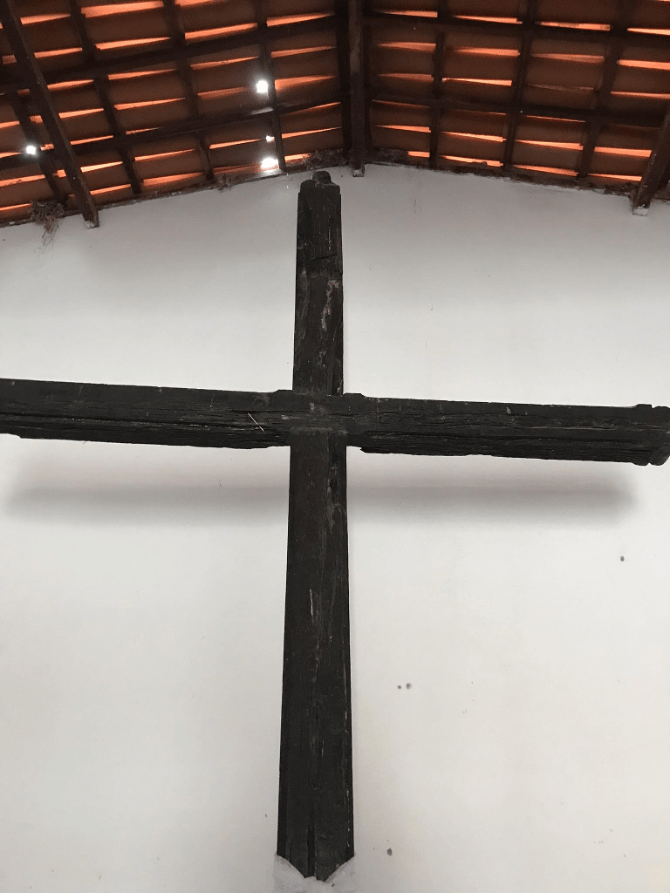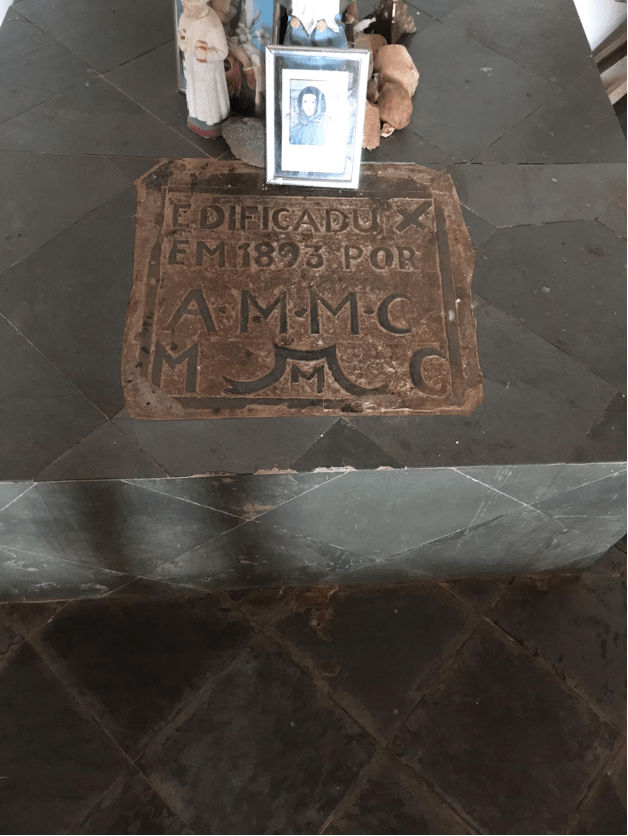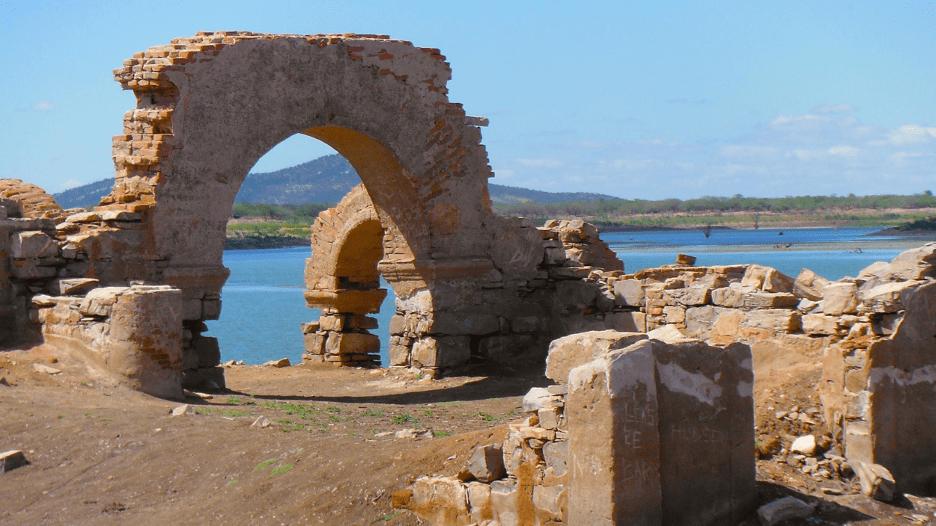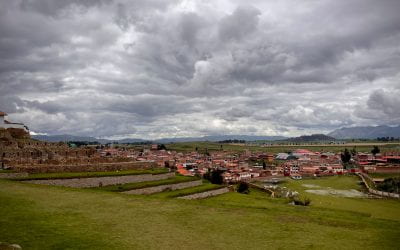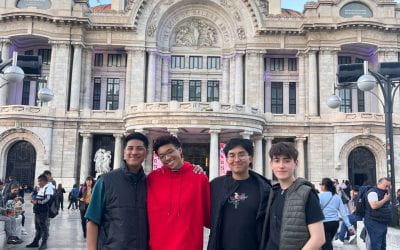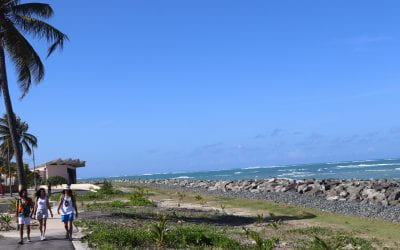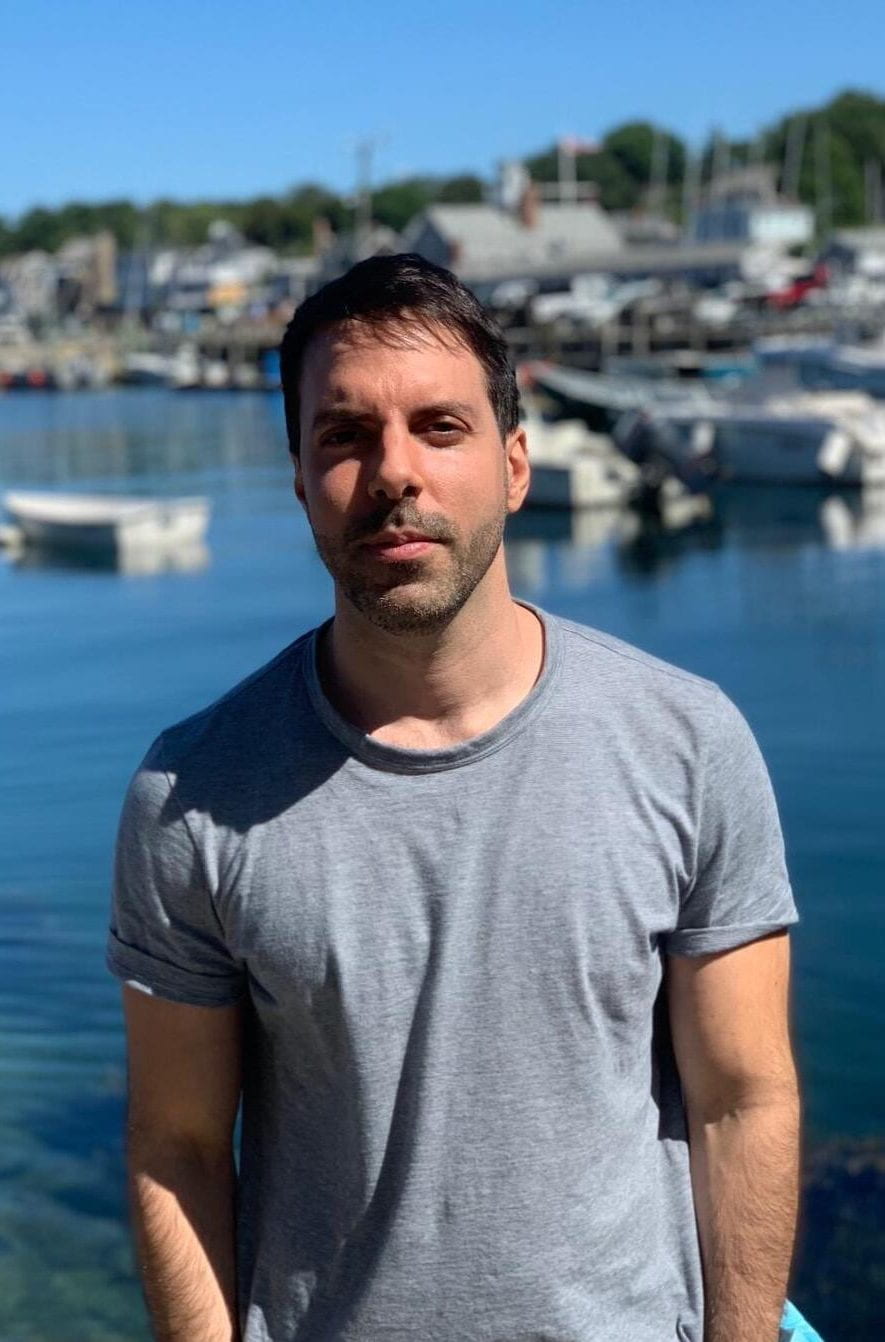
About the Author
Lucas Mertehikian was born in Buenos Aires and lives in Cambridge, Massachusetts. He is a Ph.D. candidate in Romance Languages and Literatures at Harvard University, and a Graduate Student Associate at the David Rockefeller Center for Latin American Studies.
Acerca del Autor
Lucas Mertehikian nació en Buenos Aires y vive en Cambridge, Massachusetts. Es estudiante de doctorado en Romance Languages and Literatures en Harvard University, y Graduate Student Associate del David Rockefeller Center for Latin American Studies.
A Tale of the Three Canudos
When we arrived it was still daytime. It had taken us twelve hours to get there, almost twice as much as expected. As I got off the bus, I felt a heat wave slap me on the face. The air was humid, and the grey sky was packed with clouds. The dirt, still wet under the paving stones, was brownish. If I hadn’t known where I was, I would have guessed the sea was closeby. I thought how ridiculous I looked standing there by myself, in the middle of the road, holding a 1,000-page book between my hands. It was the only impractical decision I had made as when packing. Although I had managed to put everything I needed in just one bag, I was now carrying from town to town a hardcover heavy book which had absolutely nothing to do with my research trip. But the day before leaving for Brazil I had been swept by this fictional memoir about the reunification of Italy, and I had no choice but to bring it with me. “I was born a Venetian, on 18 October 1775, the day of Saint Luke of the Gospel,” it began, “and by God’s grace I shall die an Italian, whenever that Providence that so mysteriously governs the world deems it right.”
I, too, had just arrived at a corner of the world that Providence ruled in a rather mysterious way: Canudos. In 1893, Antônio Vicente Mendes Maciel, better known as Antônio Conselheiro, settled in that Northeastern town to preach. Right in the middle of the sertão, a semi-desert, Canudos was populated by men and women who had wandered from other places, fleeing frequent droughts. “Imagine a legion of brave and daring adventurers, with no profession or earnings, who hate calendars, clocks, taxes, and bows,” Machado de Assis, the most famous novelist of his time, wrote about them, himself drawing on fantasy. Conselheiro renamed the town “Belo Monte,” though it was in a valley between many hills. O sertão vai virar mar, he announced from there. Canudos became a true experiment in communality, located on the fringes of the world—especially, on the fringes of the republican regime that had recently risen to power in Brazil, and which would soon target Conselheiro as a threat.
The rest of the story is predictable; as is usually the case with Latin America, it is a screwball tragedy of sorts, executed by clumsy humans rather than guided by unfailing fate. In 1896, Conselheiro placed his regular order for wood in the neighboring town of Joazeiro, but Joazeiro’s new local judge mistrusted the preacher, and decided not to hand the wood over. Then the rumor arose that the conselheiristas were about to invade Joazeiro to take it from them by force. This triggered the first of three military interventions repelled by the inhabitants of Canudos. After these failures, the federal government took it on itself to set an example with Canudos. The fourth and last expedition, in September 1897, was a massacre that took the lives of nearly 30,000 people. Conselheiro had died of dysentery before the attacks ended; his head was chopped off and bequeathed to science. The town was destroyed; the survivors, shot to death. Euclides da Cunha wrote Rebellion in the Backlands, the most well-known chronicle of the conflict; Flávio de Barros took the most famous pictures. In one of them, we see soldiers lining up in the background and watching over a group of women and children that have been taken prisoners. It is impossible to imagine what went through their heads. They probably had never seen a photo camera. Was that entanglement of metal and wood the token of progress that remained hidden on the other side of the sertão? They had been born Brazilians, they would die conselheiristas.
I had arrived in Brazil a month before to study the cultural consequences of the expansion of paper money in the late 19th century. I had been in Rio de Janeiro and Brasilia, visiting numismatic collections, reading judiciary acts about counterfeiters, and surveying the archives of the Brazilian Academy of Literature, where I stumbled upon Machado de Assis’ bankbook (I now remember the tedious authorization procedures at each library as if I were mourning a lost world). Legend has it that Conselheiro burned all banknotes in Canudos bearing the image of the Republic, as a sign of his disapproval of the political and economic regime. The well-guarded historical legacy of Brazil’s largest cities, I supposed without knowing Canudos, was the perfect counterpart to the destruction of Canudos. At first sight, it seemed I could be right.
“¡Lucas!,” someone yelled from a black car.
Dona Joselina, the owner of the Pousada Por do Sol, had sent someone to pick me up. I got in the car; the man drove fast as we climbed up the road. Suddenly he stopped in front of a grocery store, and a teenager ran to meet him. The driver started shouting words I could barely understand.
“Porco, eão, vaca…,” he went on. The kid wrote everything down on his notebook and ran to the store. He then came back with a piece of paper in his hand.
“I’m sorry,” the driver told me, “but today’s the day I win.”
Of course! It was the jogo do bicho! I had read all about it in a seminar. The game was invented in Rio de Janeiro, in the 19th century. The owner of the city zoo used to hide an animal behind a curtain, and visitors would try to guess what kind of bicho it was. Crowds immediately started gathering outside the zoo to place their bets, and soon the game became a regular lottery. Since one could bet as little money as wanted, the game was an immediate success among working-class people. It was officially banned in 1946, but still survives underground. I felt as if I had finally moved from the classroom to the real world. I was overcome by a strange kind of excitement.
The hostel was at the end of the road, on the top of the hill. At the entrance there was a small wooden image of a Conselheiro, and behind it I could see a large lake. I was puzzled by the landscape. On our right, standing on the middle of the street, there was a transmission tower that looked endless next to the neighboring buildings.
Joselina came out to greet me. With her was María, a sociologist from São Paulo who was doing field work for her master’s degree. We sat outside. María told me she studied how the existence of the açude determined the daily life of the people of Canudos, and how the village’s economy had changed since its construction. I nodded and made a few comments mostly to hide my not knowing what the word açude actually meant, or why it would have changed Canudos’s life. But I didn’t want to ruin the first impression with a question that was —I was positive about it— quite dumb. It would be better to google it as soon as I was alone. Joselina offered to put me in touch with Jamilson, the area’s best guide. It was already dark and the antenna to our right looked as if taken off from a film set. I thanked Joselina and went into my room. I opened Confessions of an Italian. “It is not harmony that is lacking between us,” I read, “but the possibility of harmony.” I fell asleep right away.
The next morning, Jamilson shows up early. We set out on the route towards the Canudos State Park, the archaeological zone where, more than a century ago, the battles between the conselheiristas and the army took place. The State University of Bahia has already salvaged many pieces (especially weapons, bullets, and everyday artifacts), but much remains to be done. Jamilson asks me what I know about Canudos; he wants to make sure he doesn’t bore me, but to me, programmed as a student, it feels like a test. I speak of Conselheiro, I then move on to Machado de Assis’ chronicles about the war, I end up talking about the role of banknotes in Brazilian culture at that time. There are a few coins among what is found from time to time in the area, says Jamilson, we can take a look at them. I’m interested, I say, and I continue to monologue about Machado de Assis. When I realize I’m about to tell him about my dissertation, I stop. I don’t mean to try his patience.
The first thing I do when I arrive at the State Park is sign the guest book. I would never do it elsewhere, but here I feel an urge to write my name down in the large, awkward notebook the guard is holding out to me. The park is immense, it spans over 30,000 acres, transmitting the same feeling of infinite as the Argentine pampas. The soil is incredibly hard; it’s difficult to imagine how some plants make their way into the surface, towards the sun. Here and there some posters report where the clashes between conselheiristas and soldiers took place, but around them there’s nothing. I get excited about a large wooden cross, but it disappoints me to read that it was built in 1945. I’m desperate for something original.
Yet, I feel something other than disappointment. The air is still dense, the clouds in the sky are dark, and I don’t know whether to blame it on the mountain’s height or the atmospheric pressure, but my body becomes more and more heavy as I walk from one point to another. After a few steps from the cross to the car I’m already gasping for air. Jamilson takes a small package wrapped in a cloth out of his backpack. He unfolds it to show me a small and worn gun. It looks like an old toy.
“I found it here,” he explains. It must have belonged to a soldier or a conselheirista, I’m not sure what Jamilson would prefer. In any case, it does nothing for me, but I try to hide my indifference.
“There’s a weird energy here, huh?” I ask, to change the subject. I feel like I’ve just said something tremendously obvious. Jamilson nods, then grabs his phone and suggests that we take a selfie for his Instagram account. I try to smile, behind us stands the tall wooden cross.
Jamilson drives to the last stop in the park. When I get out of the car, the first thing that strikes me are the faces of a woman and a child, printed on a transparent acrylic panel. They seem familiar. Around there are others, the eyes multiply, they look at me. Jamilson comes down with a book in his hand and points to the page where it’s open: it is Flávio de Barros’ famous picture. The faces, which in the entire image blend into one another, have been planted separately on the barren soil of the hill.
“The picture was taken right here,” he explains.
I move forward, Jamilson stays behind. I walk between the faces in silence. I see the eyes that saw the horrors of war. I know that those who look at me are about to die, but the absence of the soldiers separates them forever from their destiny, and they now remain here like ghosts. The acrylic is wet from the morning’s dew. I find it hard to hold their gaze. It’s easier to look at them through my phone, so I start taking photos, many, all the same, to transfer the images to the device and erase them from my head. Only after a while do I realize that behind the faces I can see the same water mirror as from the inn. I turn to Jamilson.
“What is that?,” I ask, pointing forward.
“What?,” Jamilson replies, puzzled by my question. “The açude?”
Back in the car, Jamilson tells me the story of the water. After the last military intervention, the army razed Canudos. Still, a couple of decades later, a group of survivors returned. They built their houses on the remains of Belo Monte, and erected a church. It was the second Canudos.
“That’s where dona Joselina’s grandmother lived,” says Jamilson, “she was the daughter of conselheiristas.”
In 1951 the construction of the Cocorobó açude began, a huge dam for the Vaza-Barris river to flood the region and ensure water all year round. The plan was ambitious, boundless, infeasible. So it seemed at least to the inhabitants of the second Canudos, who had already heard too many promises to believe in them. They went on with their lives as the construction around them began. Some moved to live on one of the nearby hills. In 1969 the unexpected happened: the water came. And not only that, but it came in such a ferocious way that it completely covered the second Canudos and what was left of the first. Conselheiro was wrong: the sertão turned into açude.
“That’s one way of putting it,” Jamilson approved.
Some skeptics, who had never believed in the açude, had to leave their homes in a hurry, as if it were a natural flood. The government made no effort to relocate them, so they decided to join those who had moved to one of the nearby hills before them.
“That’s the third Canudos, the current one,” Jamilson says.
We get out of the car almost on the shore of the dam, in front of a small stone building. “Museu Histórico de Canudos” reads the inscription over the wooden door. The fishermen in the area set it up, Jamilson explains. With the construction of the dam, some people began to live all year from the activity, and they keep here all the objects they find buried underwater during their daily tours of the açude.
Inside, the museum looks even smaller than from the outside, filled as the walls are with bullets, pieces of guns, remnants of ammunition and knives, but also with horseshoes, sewing machines, family portraits and coins, traces of an everyday life on the fringes of war.
Most of the coins are pretty new, and I can imagine them falling into the water from the pockets of a fisherman bent over his boat. Some colored papers are pasted on one of the walls. A face among them seems familiar, so I get closer to take a better look at it. Indeed, blurred by the passage of time and humidity, there is Machado de Assis, his purple face printed on the thousand-cruzado bills that the government emitted at the end of the 80s, and that disappeared with the last great inflationary crisis. I feel like I ran into an old friend after a long time without seeing him. I also have the impression, although I cannot see his face, that Jamilson is smiling behind me.
We make one last stop before returning to the inn. We get out of the car in front of a church not much bigger than the fishermen’s museum. A woman greets us at the entrance and closes the door behind us. There is no one else inside. I breathe in the must and incense smell of all small chapels; we could be in any one of these kinds of churches in the world if it weren’t for the black wooden cross that stands in front of us. Someone has tied a white handkerchief to it. To the right, next to the benches, I see a pile of planks of a wood lighter-colored than the cross. I walk towards it; the surface is rough and full of holes, as if someone had repeatedly hit it with something sharp. I feel compelled to lower my eyes. At the foot of the altar there is a bronze plaque. “Built in 1893 by A.M.M.C”: Antônio Mendes Maciel Conselheiro.
“It all started with the wood,” Jamilson says, stroking the planks piled up next to the cross with his hands. Are these the same planks that should have come from Joazeiro in 1896? How did they get there? Who preserved them? How did they survive the flood? I put my right hand on them and mimic Jamilson’s movement. They are rough. I don’t know how long we stay like this in silence.
There’s an epilogue to the story. In 1996, the region suffered from a terrible drought. The water in the açude diminished, becoming so low that the buildings of the second Canudos, now in ruins, and even some parts of Conselheiro’s city, emerged for the first time in decades. It was a hundred years since the Joazeiro’s wood incident that triggered the war. It was the first time that those born in the third Canudos could see their parents’ home. Jamilson hands me the photo book he showed me earlier —he has a stack of them piled up in the back seat of the car. As I turn the pages I see the remains of the second Canudos, photographed during the drought. I’m particularly taken by a picture showing the remains of a church, just two stone arches without a roof, and behind them, the water withdrawn. I ask how much it is, count the bills in my pocket, and pass them on to Jamilson. We say goodbye with a handshake. The volume is short but big and heavy, and as I pack my bag to go back home, I wonder where I’m going to put yet another book about a city underwater.
Historia de tres ciudades
Por Lucas Mertehikian
Cuando llegamos, todavía era de día. El viaje desde Salvador había durado doce horas, casi el doble de lo previsto. Al bajar del micro sentí que una ola de calor me golpeaba la cara. El aire era húmedo y el cielo estaba gris y cerrado. La tierra, todavía mojada bajo los adoquines, era marrón. De no saber dónde estábamos, podría haber creído que el mar estaba cerca. Pensé cuán ridículo me vería, parado solo en medio de la calle, con un libro de mil páginas entre las manos. Era la única decisión impráctica que había tomado a la hora de empacar. Aunque había conseguido guardar todo lo que necesitaba en un solo bolso, cargaba ahora, de ciudad en ciudad, con Confesiones de un italiano, de Ippolito Nievo, un pesado volumen de tapa dura que nada tenía que ver con los motivos académicos de mi estadía. Pero un día antes de volar a Brasil, estas memorias imaginarias de la reunificación de Italia me habían atrapado, y no pude evitar llevarlas conmigo: “Nací veneciano el 18 de octubre de 1775, el día del evangelista san Lucas”, empezaban, “y moriré, por la gracia de Dios, italiano, cuando así lo decida esa Providencia que gobierna misteriosamente el mundo”.
También yo había llegado a un rincón del mundo que la Providencia gobernó de forma más bien misteriosa: Canudos. En 1893, Antônio Mendes Maciel, conocido como Antônio Conselheiro, se instaló en ese pueblo del Nordeste para difundir su prédica. En medio del sertão, una zona semidesértica, Canudos se pobló de hombres y mujeres que vagaban escapando de las sequías frecuentes. “Imaginen una legión de aventureros valientes, audaces, sin oficio ni ganancias, que detestan los calendarios, los relojes, los impuestos, las reverencias”, escribió sobre ellos Machado de Assis, el novelista brasileño más famoso de la época, entregándose también él a la fantasía. Conselheiro rebautizó el pueblo “Belo Monte”, aunque estaba en un valle entre colinas. O sertão vai virar mar, profetizaba desde ahí, y Canudos se transformó en un verdadero experimento comunitario, al margen del mundo. Sobre todo, al margen del régimen republicano que gobernaba Brasil desde poco antes, y no tardó en ver en Conselheiro una amenaza.
El resto de la historia es previsible; como a menudo sucede en América Latina, tiene la forma de una tragedia de enredos, ejecutada por seres humanos torpes más que guiada por un destino inamovible. En 1896, Conselheiro hizo su pedido habitual de madera al pueblo vecino de Joazeiro. Pero el nuevo juez de Joazeiro miraba con recelo al predicador, y se negó a entregarla. Surgió entonces el rumor de que los conselheiristas invadirían Joazeiro para tomar la madera por la fuerza. Eso desencadenó la primera de tres intervenciones militares repelidas por los habitantes de Canudos. Después de esos fracasos, el gobierno federal decidió responder con un castigo ejemplar. La cuarta y última expedición, en septiembre de 1897, fue una masacre que dejó unos treinta mil muertos. El cuerpo de Conselheiro, que había muerto antes del fin de los ataques, fue decapitado, y su cabeza entregada a la ciencia. El pueblo fue destruido; los sobrevivientes, fusilados. Euclides da Cunha escribió Los sertones, la crónica más conocida del conflicto; Flávio de Barros tomó las fotografías más famosas. En una de ellas, una fila de soldados vigila desde el fondo a un grupo de mujeres y niños que han sido tomados prisioneros. Es imposible imaginar qué pensarían; seguramente era la primera vez que veían una cámara. ¿Ese aparato de metal y madera era la divisa del progreso que se escondía al otro lado del sertão? Habían nacido brasileños, morirían conselheiristas.
Yo había llegado un mes antes a Brasil para estudiar los efectos culturales de la expansión del papel moneda a fines del siglo diecinueve. Había estado en Río de Janeiro y Brasilia en colecciones de numismática, leyendo actas sobre falsificadores de billetes y revisando los archivos de la Academia Brasileña de Letras, donde di con la libreta bancaria de Machado (los molestos trámites de autorización en cada archivo me producen ahora la nostalgia de un mundo perdido).
La leyenda cuenta que Conselheiro quemó todos los billetes que circulaban en Canudos con la imagen de la República, en señal de desaprobación del régimen político y económico. La historia protegida de las grandes ciudades, supuse sin conocer el pueblo, sería la contracara perfecta de la destrucción de Canudos. La primera impresión lo comprobaba.
—¡Lucas! —gritaron desde un auto negro.
Era el enviado de doña Joselina, la dueña de Pousada Pôr do Sol. Entré al auto; el hombre manejaba rápido por la calle en subida. De golpe se detuvo frente a un almacén, un adolescente corrió a su encuentro. El conductor gritaba palabras que me costó entender.
—Porco, leão, vaca… —siguió. El chico anotó todo en un cuaderno y salió de nuevo hacia el almacén. Volvió con un pequeño papel impreso.
—Perdón —me dijo el hombre—, pero hoy gano.
¡Era el jogo do bicho! Había leído en un seminario sobre este juego que empezó a finales del siglo diecinueve en Río de Janeiro. El dueño del zoológico escondía un animal detrás de una cortina y los asistentes intentaban adivinar de qué bicho se trataba. La gente comenzó a amontonarse incluso afuera del zoológico para poder apostar. Al poco tiempo se transformó en una lotería; como se podía jugar con poco dinero, fue un éxito entre las clases populares. En 1946 fue prohibido, pero sobrevive en la clandestinidad. Sentí que por fin había pasado de la sala de clases al mundo real; me invadió una excitación extraña.
La posada estaba al final de la calle, al borde de la colina. En la entrada había un pequeño Conselheiro de madera, detrás se asomaba una extensa laguna. El paisaje me confundió. A la derecha, en medio de la calle, se levantaba una antena de teléfono que, comparada con el resto de las construcciones, parecía interminable.
Joselina salió a recibirme. La acompañaba María, una socióloga de San Pablo que estaba haciendo trabajo de campo para su maestría. Nos sentamos afuera. María me contó que investigaba cómo la existencia de la açude determinaba la vida cotidiana de los habitantes de Canudos, y cómo había cambiado la economía del lugar desde su construcción. Yo asentía y hacía comentarios para ocultar que no sabía qué significaba la palabra açude, ni por qué habría cambiado la vida de Canudos. Pero no quería arruinar la primera impresión con una pregunta que era —estaba seguro— bastante tonta. Sería mejor googlearlo en cuanto estuviera solo. Joselina me ofreció ponerme en contacto con Jamilson, era el mejor guía de la zona. Había oscurecido y la antena a nuestra derecha parecía salida de un set de filmación. Le agradecí y entré en mi cuarto. Tomé Confesiones de un italiano. “No es la concordia lo que falta entre nosotros”, leí, “sino la posibilidad de la concordia”. Me quedé dormido enseguida.
A la mañana siguiente, Jamilson aparece temprano. Salimos a la ruta en dirección al Parque Estadual Canudos, la zona arqueológica donde, hace más de un siglo, ocurrieron las batallas entre los conselheiristas y el ejército. La Universidad del Estado de Bahía ha rescatado muchas piezas (sobre todo armas, balas y artefactos cotidianos), pero queda mucho por excavar. Jamilson me pregunta qué sé sobre Canudos; quiere asegurarse de no aburrirme, pero programado como un estudiante, lo siento como una prueba. Hablo de Conselheiro, sigo por las crónicas de Machado de Assis sobre la guerra, termino con un largo excursus sobre el papel de los billetes en la cultura brasileña de la época. Hay algunas monedas entre lo que se encuentra cada tanto, dice Jamilson, podemos verlas. Me interesa, digo, y sigo monologando sobre Machado de Assis. Cuando me doy cuenta de que estoy a punto de contarle mi tesis, me detengo. No quiero abusar de su paciencia.
Lo primero que hago al llegar al Parque Estadual es firmar el libro de visitas. Nunca lo hice ni haría en otra parte, pero aquí siento una urgencia por escribir mi nombre en el cuaderno grande e incómodo que me extiende el guardia. El parque es inmenso, tiene más de mil trescientas hectáreas, y transmite la misma sensación de infinito que la pampa. Es difícil decir qué estamos viendo, sin embargo. El suelo es increíblemente duro, cuesta imaginar cómo algunas plantas se abren paso hacia el sol. Hay carteles que informan dónde ocurrieron los enfrentamientos entre los conselheiristas y soldados, pero alrededor, nada. Me entusiasmo con una gran cruz de madera, pero me decepciona leer que fue construida en 1945. Busco, con desesperación, un original.
Siento más que decepción, de todas formas. El aire sigue denso, las nubes en el cielo son oscuras y no sé si es la altura o la presión, pero mi cuerpo es cada vez más pesado, me cuesta caminar de un punto a otro. Los pasos entre la cruz y el auto me dejan agotado. Jamilson saca de su mochila un bulto envuelto en un trapo. Al desenvolverlo, aparece un revólver pequeño y gastado, parece un juguete viejo.
—Lo encontré acá —explica. Debe haber pertenecido a un soldado o a un conselheirista, no sé qué preferiría Jamilson. No me provoca nada, pero intento disimularlo.
—Hay una energía extraña acá, ¿no? —digo, para cambiar de tema. Creo haber señalado una obviedad. Jamilson asiente. Después saca su teléfono y sugiere que nos tomemos una selfie para su Instagram. Intento sonreír, detrás de nosotros se alza la cruz de madera.
Jamilson maneja hasta la última parada del Parque. Cuando bajo del auto, lo primero que me llama la atención son los rostros de una mujer y un niño, impresos sobre un panel de acrílico transparente. Me parecen conocidos. Alrededor hay otros, los ojos se multiplican, me miran. Jamilson baja con un libro en la mano y señala la página en la que está abierto: es la famosa foto de Flávio de Barros. Los rostros, que en la imagen entera se confunden unos con otros, han sido plantados por separado sobre la tierra estéril de la colina.
—Justo aquí se tomó esta foto —explica.
Avanzo, Jamilson se queda atrás. Camino entre las caras en silencio: veo los ojos que vieron el horror de la guerra. Sé que quienes me miran están a punto de morir, pero la ausencia de los soldados los separa para siempre de su destino, y permanecen aquí como fantasmas. El acrílico está mojado por el rocío de la mañana. Me cuesta sostenerles la mirada. Es más fácil hacerlo a través del teléfono, así que les saco fotos, muchas, todas iguales, para transferir las imágenes al aparato y borrarlas de mi cabeza. Solo después de un rato me doy cuenta de que detrás de las caras se ve el mismo espejo de agua que desde la posada. Me doy vuelta hacia Jamilson.
—¿Qué es eso? —pregunto, señalando hacia delante.
—¿Qué? —responde Jamilson, extrañado—. ¿La açude?
De vuelta en el auto, Jamilson me cuenta la historia del agua. Después de la última intervención militar, el ejército arrasó Canudos. Aun así, un par de décadas después, un grupo de sobrevivientes volvió. Construyeron sus casas sobre los restos de Belo Monte y levantaron una iglesia. Era la segunda Canudos.
—Ahí vivía la abuela de doña Joselina —dice Jamilson—, que era hija de conselheiristas.
En 1951 comenzó la construcción de la açude Cocorobó, una enorme represa para que el río Vaza-Barris inundara la región y asegurara agua todo el año. El plan era ambicioso, desmesurado, irrealizable. Así les parecía a los habitantes de la segunda Canudos, que ya habían escuchado demasiadas promesas como para creerlas. Siguieron con sus vidas mientras comenzaban las obras a su alrededor. Algunos se fueron a una de las colinas cercanas. En 1969 sucedió lo impensado: el agua llegó. Y no sólo eso, sino que llegó con tanta furia que tapó por completo la segunda Canudos y lo que quedaba de la primera. Se equivocaba Conselheiro: el sertão se transformó en açude.
—Es una manera de decirlo —aprobó Jamilson.
Algunos escépticos, que nunca habían creído en la açude, debieron abandonar sus casas apresuradamente, como si se tratara de una inundación natural. El gobierno no hizo esfuerzos por reubicarlos. Entonces decidieron unirse a los que se habían mudado a una de las colinas cercanas.
—Esa es la tercera Canudos, la actual —dice Jamilson.
Bajamos del auto casi sobre la orilla de la represa, frente a una pequeña construcción de piedra. “Museu Histórico de Canudos”, dice la inscripción sobre la puerta de madera. Es una iniciativa de los pescadores de la zona, explica Jamilson. Con la construcción de la represa, algunas personas comenzaron a vivir todo el año de la actividad, y guardan allí todos los objetos que encuentran sepultados bajo el agua durante sus recorridos diarios por la açude.
Por dentro, el museo parece aún más pequeño que por fuera, repletas como están las paredes de balas gastadas, pedazos de revólveres, restos de municiones y cuchillos, pero también de herraduras, máquinas de coser, retratos familiares y monedas, rastros de una vida cotidiana al margen de la guerra.
Las monedas son casi todas recientes, las imagino cayendo al agua desde los bolsillos de un pescador inclinado sobre su bote. También hay papeles de colores pegados sobre una de las paredes. Una cara entre ellos se repite y me resulta familiar. Me acerco para ver mejor. Efectivamente, borroneado por el paso del tiempo y la humedad, ahí está Machado de Assis, su rostro violáceo impreso en los billetes de mil cruzados que el gobierno lanzó a finales de los años ochenta, y que desaparecieron con la última gran crisis inflacionaria. Siento que me encontré con un amigo después de mucho tiempo sin vernos. Tengo la impresión también, aunque no puedo verlo, de que Jamilson sonríe a mis espaldas.
Hay una última parada en nuestro recorrido antes de volver a la posada. Bajamos del auto frente a una iglesia no mucho más grande que el museo de pescadores. Una mujer nos recibe en la entrada y cierra la puerta detrás de nosotros. No hay nadie más. Respiro el olor a humedad e incienso de todas las capillas pequeñas; podría estar en cualquier iglesia similar del mundo si no fuera por la cruz de madera negra que se levanta frente a nosotros. Alguien ha atado un pañuelo blanco sobre ella. A su derecha, al costado de los bancos para los fieles, veo un montón de tablones de una madera más clara que la cruz. Camino hacia ella; su superficie es rugosa y está llena de huecos, como si alguien la hubiera golpeado insistentemente con algo punzante. Me siento obligado a bajar los ojos. Al pie del altar hay una placa de bronce. “Edificado em 1893 por A.M.M.C”: Antônio Mendes Maciel Conselheiro.
—Todo empezó por la madera —dice Jamilson, mientras acaricia con sus manos los tablones arrumbados unos sobre otros. ¿Son esos mismos tablones los que deberían haber llegado de Joazeiro en 1896? ¿Cómo llegaron hasta ahí? ¿Quién los preservó? ¿Cómo sobrevivieron a la inundación? Apoyo mi mano derecha sobre ellos e imito el movimiento de Jamilson. Son ásperos. No sé cuánto tiempo estamos así en silencio.
La historia tiene un epílogo. En 1996, la región sufrió una fuerte sequía. El agua de la açude entonces comenzó a retirarse, y llegó a bajar tanto que emergieron, por primera vez en décadas, los edificios de la segunda Canudos, ahora en ruinas, e incluso algunas partes de la ciudad de Conselheiro. Se cumplían cien años desde el incidente con la madera de Joazeiro que desencadenó la guerra. Fue la primera vez que los que habían nacido en la tercera Canudos vieron el hogar de sus padres. Ya frente a la posada, Jamilson me alcanza el libro de fotos que me mostró antes: tiene una pila de ellos en el asiento trasero del auto. En sus páginas veo los restos de la segunda Canudos, fotografiados durante la sequía. Me llama la atención una imagen donde se ve lo que queda de una iglesia, apenas dos arcos de piedra sin techo y detrás de ellos, el agua retirada. Pregunto cuánto cuesta, saco los billetes que tengo en el bolsillo y se los paso a Jamilson. Nos despedimos con un apretón de manos. El volumen es corto pero grande y pesado, y cuando preparo el bolso para volver a casa, me pregunto dónde voy a guardar otro libro sobre una ciudad sumergida.
More Student Views
Andean Cultural Landscapes in Danger: The Chinchero International Airport
English + Español
Cusco stands as one of the most culturally and ecologically captivating regions globally.
Blossoming Bonds: Beauty and Belonging in Mexico
When I heard the news about my upcoming trip to Mexico, a surge of excitement coursed through me, and I immediately felt the urge to share this exhilarating news with my close friends and family.
Weapons of Mass Construction: Building a Puerto Rico for the People
I zip up my raincoat and turn on my headlamp as we tread along a damp trail in El Yunque National Rainforest, Puerto Rico.

